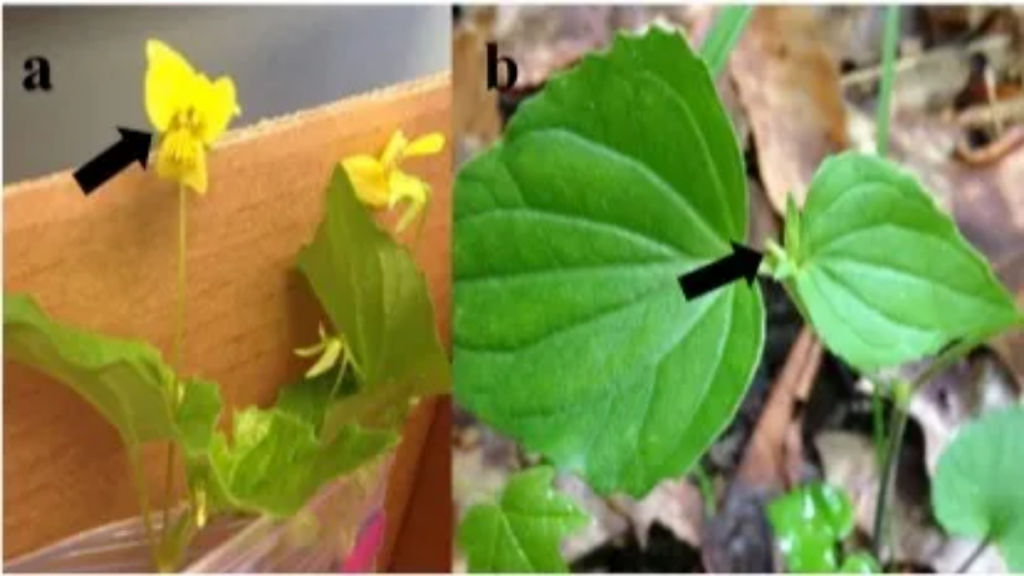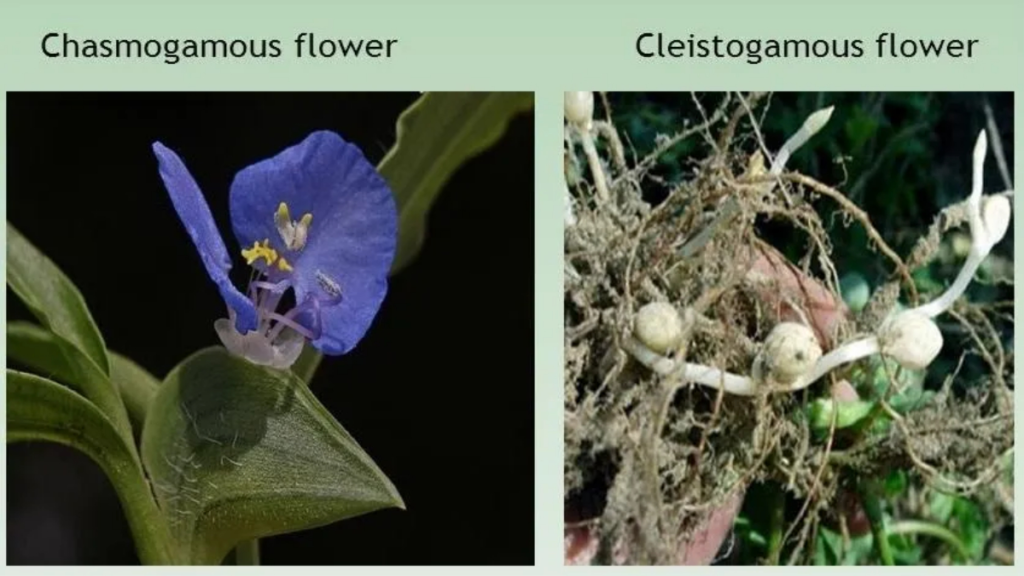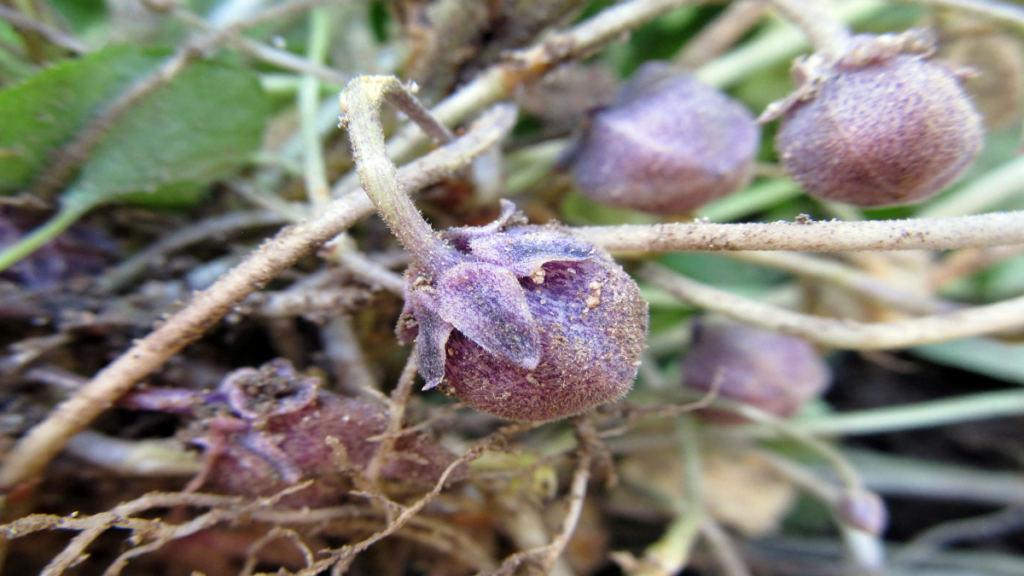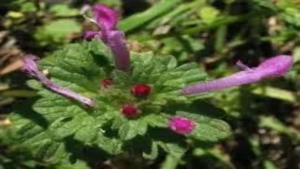Discover the fascinating world of cleistogamous flowers and learn why their petals never open. A must-read for all gardening enthusiasts!
Introduction: Cleistogamous Flowers
Have you ever heard of cleistogamous flowers? These unique flowers have the peculiarity of not opening their petals, which makes them a fascinating subject for gardeners and botanists alike. In this blog post, we will delve into the world of cleistogamous flowers and explore why their petals don’t open.
What are Cleistogamous Flowers?
Cleistogamous flowers, also known as “clandestine” or “closed” flowers, are a remarkable adaptation found in certain plant species. These flowers exhibit two distinct types of blooms: the chasmogamous (open) flowers and the cleistogamous (closed) flowers. The chasmogamous flowers are the ones we’re familiar with, displaying vibrant petals to attract pollinators and facilitate cross-pollination. In contrast, cleistogamous flowers remain closed throughout their entire lifecycle, relying on self-pollination to produce seeds.
Why Do Cleistogamous Flowers Keep Their Petals Closed?
The primary reason cleistogamous flowers keep their petals closed is to ensure successful self-pollination. By remaining closed, they prevent pollen from being dispersed and lost to the environment. This mechanism allows the pollen to remain within the flower, increasing the chances of fertilization and seed production. Additionally, keeping the petals closed helps conserve energy, as the plant doesn’t need to allocate resources to produce showy, attractive blooms.
Evolutionary Advantages of Cleistogamous Flowers
The unique trait of cleistogamous flowers offers several evolutionary advantages:
- Reproductive Assurance: By self-pollinating, cleistogamous flowers can produce seeds even in environments where pollinators are scarce or absent, ensuring the continuation of the species.
- Resource Efficiency: Cleistogamous flowers require fewer resources to develop, as they don’t need to invest in large, attractive petals or nectar production.
- Adaptability: This strategy allows plants to thrive in diverse environments, from shaded forest floors to arid regions, where traditional pollination methods may be challenging.
Types of Cleistogamous Flowers
Cleistogamous flowers can be found in various plant families, including:
Oxalis (Wood Sorrel)
This genus includes over 500 species, many of which exhibit cleistogamy. Oxalis flowers are often small and inconspicuous, with closed petals that self-pollinate.
Viola (Violet)
Some Viola species, like the Common Blue Violet (Viola sororia), produce cleistogamous flowers in addition to their showy, open flowers.
Commelina (Dayflower)
Commelina flowers are known for their delicate, closed petals that self-pollinate, ensuring reproduction.
Benefits of Cleistogamous Flowers
Cleistogamous flowers have evolved to thrive in environments with:
- Limited pollinators
- Unfavorable weather conditions
- High competition for pollination
By self-pollinating, these flowers guarantee reproduction and increase their chances of survival.
What is a cleistogamous flower?

A cleistogamous flower is a type of flower that does not open at all and shows self-fertilisation or autogamy. This means that the pollen from the anther of the flower is transferred to the stigma of the same flower, resulting in self-pollination. Cleistogamous flowers do not depend on pollinating agents for pollination, making them more resilient and adaptable to adverse conditions.
These flowers are characterized by their closed petals and non-showy appearance, with the reproductive organs remaining enclosed within the flower. This helps to protect the pollen and stigma from external elements, ensuring that pollination can occur even in unfavourable conditions.
Cleistogamy is well known in the grass family, including peas, peanuts, and pansy, as well as in the largest genus of cleistogamous plants, Viola. The opposite of cleistogamy, or “closed marriage”, is chasmogamy, or “open marriage”, where flowers open and expose their reproductive parts to allow cross-pollination.
While cleistogamy has several advantages, such as not requiring energy and resources to bear showy flowers, not depending on pollinators for pollination, and producing seeds in adverse and unfavourable conditions, it also has disadvantages. The main disadvantage is that cleistogamy cannot produce genetically diverse seeds because it shows self-pollination, leading to a lack of genetic diversity and potential inbreeding depression.
In summary, cleistogamous flowers are a unique and fascinating type of flower that do not open and show self-pollination. They have several advantages, such as not depending on pollinators and producing seeds in all conditions, but also have disadvantages, such as a lack of genetic diversity. Understanding cleistogamy is important for understanding plant reproduction and evolution, as well as for developing strategies for plant breeding and conservation.
What is the difference between cleistogamous and chasmogamous flowers?

Cleistogamous flowers are closed flowers that do not open and remain in the bud state, while chasmogamous flowers are open flowers that expose their reproductive parts to allow cross-pollination. Cleistogamous flowers are self-pollinated and do not depend on pollinating agents for pollination, while chasmogamous flowers can be cross-pollinated by various pollinating agents such as wind, bees, insects, etc. The presence of both types of flowers allows both self-fertilisation and cross-fertilisation, ensuring less dependency on pollinators and environmental conditions and resulting in reproductive success along with genetic diversity for chasmogamous flowers.
Cleistogamy is a type of automatic self-pollination of certain plants that can propagate by using non-opening, self-pollinating flowers, especially well known in peanuts, peas, and pansies, and most widespread in the grass family. The largest genus of cleistogamous plants is Viola. The more common opposite of cleistogamy, or “closed marriage”, is called chasmogamy, or “open marriage”. Virtually all plants that produce cleistogamous flowers also produce chasmogamous ones. The principal advantage of cleistogamy is that it requires fewer plant resources to produce seeds than does chasmogamy, because development of petals, nectar and large amounts of pollen is not required. This efficiency makes cleistogamy particularly useful for seed production on unfavorable sites or adverse conditions.
Cleistogamous flowers produce an assured seed-set as the pollination is not dependent on any external agent. However, the disadvantage of cleistogamy is that self-fertilization occurs, which may suppress the creation of genetically more fit plants. Another disadvantage of self-fertilization is that it leads to the expression in progeny of deleterious recessive mutations. For genetically modified (GM) rapeseed, researchers hoping to minimize the admixture of GM and non-GM crops are attempting to use cleistogamy to prevent gene flow. However, preliminary results from Co-Extra, a current project within the EU research program, show that although cleistogamy reduces gene flow, it is not at the moment a consistently reliable tool for biocontainment; due to a certain instability of the cleistogamous trait, some flowers may open and release genetically modified pollen.
In summary, cleistogamous flowers are closed flowers that do not open and show self-pollination, while chasmogamous flowers are open flowers that expose their reproductive parts to allow cross-pollination. Cleistogamy is a type of automatic self-pollination that requires fewer plant resources to produce seeds than does chasmogamy, but it has the disadvantage of self-fertilization, which may suppress the creation of genetically more fit plants and lead to the expression of deleterious recessive mutations. Chasmogamy, on the other hand, allows cross-pollination, leading to more genetic diversity, but it requires more plant resources to produce seeds.
Do the petals of a cleistogamous flower not open?

The petals of a cleistogamous flower do not open at all. Cleistogamous flowers remain closed and do not expose their reproductive parts to the external environment. This unique characteristic of cleistogamous flowers ensures that they do not rely on external agents for pollination and instead facilitate self-pollination within the closed flower structure.
How does cleistogamy affect the evolution of plant species?
Cleistogamy is a type of automatic self-pollination of certain plants that can propagate by using non-opening, self-pollinating flowers. It is especially well known in peanuts, peas, and pansies, and is most widespread in the grass family. However, the largest genus of cleistogamous plants is Viola. Cleistogamy is a way for plants to produce seeds efficiently, as it requires fewer plant resources than chasmogamy, which involves the development of petals, nectar, and large amounts of pollen. Cleistogamous flowers are self-pollinated and self-fertilized, and do not rely on external factors for pollination. This phenomenon is also known as autogamy.
Cleistogamy has both advantages and disadvantages. The advantages include reduced dependency on external factors for pollination, the ability to produce seeds even in adverse environmental conditions, and the avoidance of synthesizing large amounts of pollen grains and nectar. However, cleistogamy also has disadvantages, such as reduced genetic variation, which can lead to inbreeding depression, and the loss of genetic variation that can aid in the development of new varieties and species. Cleistogamous flowers are almost always autogamous, which means there is no chance of cross-pollination.
Cleistogamy plays a role in the evolution of plant species by allowing plants to produce seeds efficiently in adverse conditions. It is particularly useful for seed production on unfavorable sites or adverse conditions. However, the disadvantage of cleistogamy is that self-fertilization occurs, which may suppress the creation of genetically more fit plants. Another disadvantage of self-fertilization is that it leads to the expression in progeny of deleterious recessive mutations. For genetically modified (GM) rapeseed, researchers are attempting to use cleistogamy to prevent gene flow and minimize the admixture of GM and non-GM crops. However, preliminary results show that although cleistogamy reduces gene flow, it is not at the moment a consistently reliable tool for biocontainment due to a certain instability of the cleistogamous trait.
In summary, cleistogamy is a type of automatic self-pollination of certain plants that can propagate by using non-opening, self-pollinating flowers. It is especially well known in peanuts, peas, and pansies, and is most widespread in the grass family. Cleistogamy has both advantages and disadvantages, and plays a role in the evolution of plant species by allowing plants to produce seeds efficiently in adverse conditions. However, the disadvantage of cleistogamy is that self-fertilization occurs, which may suppress the creation of genetically more fit plants. Another disadvantage of self-fertilization is that it leads to the expression in progeny of deleterious recessive mutations. For genetically modified (GM) rapeseed, researchers are attempting to use cleistogamy to prevent gene flow and minimize the admixture of GM and non-GM crops. However, preliminary results show that although cleistogamy reduces gene flow, it is not at the moment a consistently reliable tool for biocontainment due to a certain instability of the cleistogamous trait.
What is the role of self-pollination in cleistogamy?
Cleistogamy is a phenomenon where plants show self-pollination. The word cleistogamy means ‘closed marriage’ and the flowers which show cleistogamy are known as cleistogamous flowers. It is well known in the grass family, such as peas, peanuts and pansy. Viola, however, shows both cleistogamy and chasmogamy.
Cleistogamous flowers are characterized by their closed petals and non-showy appearance, with the reproductive organs remaining enclosed within the flower. This ensures that pollination can occur even in unfavourable conditions, making them more resilient and adaptable to adverse conditions. The advantage of a cleistogamous flower is that they are not dependent on pollinators, hence producing seeds in all conditions. However, the disadvantage is that they cannot produce genetically diverse seeds because they show self-pollination, leading to a lack of genetic diversity and potential inbreeding depression.
Self-pollination in cleistogamy is a process where the pollen from the anther of the flower is transferred to the stigma of the same flower, resulting in self-pollination. This ensures that the plant can produce seeds even in adverse conditions, without the need for external pollinators. However, the downside is that self-pollination can lead to a lack of genetic diversity, which can be detrimental to the long-term survival of the plant species.
In summary, cleistogamy is a phenomenon where plants show self-pollination, characterized by their closed petals and non-showy appearance. It is well known in the grass family, such as peas, peanuts and pansy. The advantage of a cleistogamous flower is that they are not dependent on pollinators, hence producing seeds in all conditions. However, the disadvantage is that they cannot produce genetically diverse seeds because they show self-pollination, leading to a lack of genetic diversity and potential inbreeding depression. Self-pollination in cleistogamy is a process where the pollen from the anther of the flower is transferred to the stigma of the same flower, resulting in self-pollination, which ensures that the plant can produce seeds even in adverse conditions, without the need for external pollinators. However, the downside is that self-pollination can lead to a lack of genetic diversity, which can be detrimental to the long-term survival of the plant species.
Conclusion:
Cleistogamous flowers have evolved a remarkable reproductive strategy, ensuring their survival in diverse environments. By understanding and appreciating these unique blooms, we can gain a deeper appreciation for the intricate mechanisms of plant reproduction. So, next time you’re out exploring, keep an eye out for these fascinating, self-pollinating flowers!
FAQs:
A: Chasmogamous flowers are the opposite of cleistogamous flowers. They open their petals to allow pollination by external agents, such as insects or wind.
A: While cleistogamous flowers do not rely on pollinators for pollination, they can still be attractive to them. This is because some cleistogamous flowers have a second type of flower, called chasmogamous flowers, that open their petals to attract pollinators.
A: Yes, many common plants have cleistogamous flowers, including violets, grasses, and legumes.
A: Yes, cleistogamous flowers are designed to self-pollinate and produce seeds, ensuring reproduction.
A: While cleistogamous flowers primarily self-pollinate, some species can still be cross-pollinated by external agents like wind or insects.
A: Cleistogamous flowers are relatively common and can be found in various plant families, but their closed petals might make them less noticeable.

Good day! Do you know if they make any plugins to assist with Search Engine Optimization? I’m trying to get my website to rank for some targeted
keywords but I’m not seeing very good results.
If you know of any please share. Thanks! I saw similar
text here: Lista escape room
I’m really glad to hear that my article helped you feel hopeful!